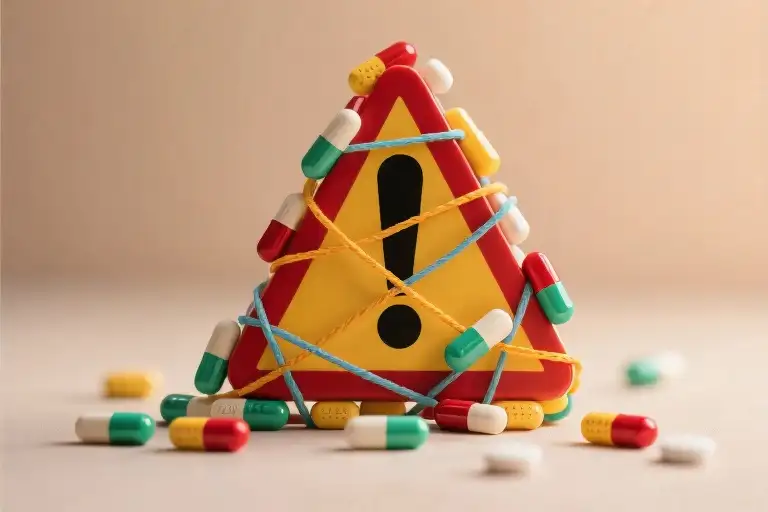The return to myself after a depressive episode carries this peculiar duality—the relief of resurfacing paired with the daunting reality of what awaits. I’m back in business, functionally speaking. The heavy fog has lifted enough that I can think without fighting through mental molasses, make decisions without that overwhelming paralysis, and actually care about outcomes again. This return feels like coming home after a long, disorienting journey. The good news is I made it. I survived the internal storm and can finally breathe without that constant weight on my chest.
Yet here’s the complicated truth about recovery: it’s not the clean, linear victory we often imagine. The bad news arrives right alongside the good, sometimes in the very same moment. While I can think clearly enough to recognize the mess left behind, I’m not necessarily equipped to handle it all at once. There are unanswered emails that have now become urgent, household tasks that have piled into small mountains, social obligations I dropped without explanation, and personal projects frozen in time. The anxiety creeps in quietly but persistently: Can I actually manage this? Is this recovery sustainable, or will I find myself back in that dark place once the pressure builds?
This tension between celebration and overwhelm defines the early days of coming back. There’s genuine joy in reconnecting with the world, but it’s tempered by the practical and emotional cleanup required. The cognitive abilities needed for organization and planning often lag behind the initial mood improvement, creating this frustrating gap between wanting to fix everything and actually being able to do so. It’s like waking from a deep sleep to find your house in disarray—you’re alert enough to see the mess but still too groggy to tackle it properly.
What makes this phase particularly challenging is the simultaneous demand to handle both past neglect and present responsibilities. The world didn’t pause during my depression, and now I must address both the accumulated backlog and the ongoing demands of daily life. This dual pressure can sometimes make recovery feel more overwhelming than the depression itself, precisely because I now care about the outcomes but lack the full capacity to manage them.
Understanding this natural imbalance between emotional and functional recovery helps normalize what many experience but seldom discuss. The journey back isn’t about immediately fixing everything; it’s about gradually rebuilding while acknowledging that some parts take longer to heal than others.
The Emotional Duality of Recovery
There’s a particular moment when you realize the fog has lifted. Colors seem brighter, music sounds richer, and the heavy blanket that made every movement feel like wading through mud has finally been lifted. This is the part we celebrate—the return to oneself, the reclamation of your mind from the grip of depression. You can think clearly again, engage in conversations without that frustrating mental lag, and actually look forward to things. The simple pleasure of enjoying a meal or feeling the sun on your skin returns, and for a while, that’s enough.
But then comes the other side of recovery, the part nobody really prepares you for. As the mental fog clears, you begin to see the aftermath—the scattered pieces of your life that were left unattended during the worst of it. Unanswered emails pile up like digital ghosts, responsibilities you put on hold now demand attention, and relationships that were placed on the back burner need mending. The anxiety creeps in not because you’re still depressed, but precisely because you’re not. Now you have to face everything.
This emotional whiplash is more than just mood swings—it’s the fundamental disconnect between emotional recovery and cognitive restoration. Your mood might improve dramatically, giving you that initial burst of relief and optimism, but the executive functions—the mental skills that help you organize, plan, and execute—often lag behind. It’s like having the desire to run a marathon before your legs have fully recovered from an injury. The will is there, but the capacity hasn’t quite caught up.
This mismatch explains why so many people in recovery experience what I call ‘recovery guilt.’ You feel you should be productive and efficient now that the depression has lifted, but your brain hasn’t yet rewired itself for complex task management. The frustration isn’t a personal failure; it’s a neurological reality. Depression doesn’t exit neatly—it leaves through different doors at different times, and emotional relief often arrives before functional capability.
Normalizing this experience is crucial. The pressure to immediately ‘make up for lost time’ can actually hinder the recovery process, creating a cycle of self-criticism that threatens to pull you back under. Understanding that recovery happens in layers—emotional first, then cognitive, then functional—can help manage expectations and reduce that performance anxiety.
What makes this phase particularly challenging is the societal narrative around mental health recovery. We see stories of dramatic turnarounds and inspirational comebacks, but rarely do we hear about the messy middle ground—the period where you’re technically ‘better’ but still navigating the practical consequences of having been unwell. This creates an unrealistic benchmark against which we measure our own progress, often concluding that we’re failing at recovery when we’re actually experiencing its most normal phase.
Embracing this duality means accepting that joy and anxiety can coexist in recovery. The relief of feeling like yourself again doesn’t cancel out the stress of facing accumulated challenges. Both are valid, both are real, and both are part of the healing process. The goal isn’t to eliminate the anxiety but to understand its source—to recognize that it stems from caring about your life again, from wanting to reengage with the world, and from the natural overwhelm of playing catch-up after time spent in survival mode.
This emotional complexity isn’t a setback; it’s evidence of progress. The fact that you’re worried about missed commitments means you’re no longer too depressed to care. The anxiety about whether you can handle everything signals that your investment in your own life has returned. These feelings, however uncomfortable, are markers of recovery—proof that you’re moving from merely surviving to actively living again.
The key lies in balancing self-compassion with practical action. Acknowledge the emotional whiplash without judging yourself for experiencing it. Create systems that account for your current cognitive capacity rather than expecting pre-depression levels of performance immediately. Most importantly, remember that this phase is temporary—the executive functions will catch up, the organizational skills will return, and the gap between how you feel and what you can do will gradually close.
The Weight of Lost Time
Depression steals time in a way that feels deeply personal and uniquely cruel. It’s not just about the days or weeks spent in bed, but about the gradual erosion of life’s continuity. During the worst of it, time doesn’t just slow down—it fractures. The world keeps moving forward with its meetings and deadlines, its social gatherings and household chores, while you’re left watching from what feels like the wrong side of a glass wall.
The metaphor of depression as a time thief resonates because it captures that peculiar quality of loss. It’s not like taking a planned vacation or even being sick with the flu, where there’s a general understanding that things will be paused and then resumed. Depression creates a parallel timeline where commitments accumulate, responsibilities compound, and the ordinary progression of life becomes distorted.
What makes this particularly challenging during recovery is the awareness of all that accumulated backlog. The emails that went unanswered, the social invitations declined, the work projects delayed, the household tasks neglected—they don’t disappear when your mood begins to lift. Instead, they wait for you, forming what can feel like an insurmountable mountain of overdue obligations.
This backlog creates a specific kind of anxiety that’s unique to recovery. It’s the pressure of knowing you need to “catch up” while simultaneously trying to maintain your current responsibilities. The mind may be clearing, but the to-do list has grown exponentially. There’s this constant calculation running in the background: How many days of work were missed? How many relationships need mending? How many practical matters require immediate attention?
The challenge becomes particularly acute because recovery isn’t just about addressing what was missed—it’s about keeping up with what’s happening right now. It’s the psychological equivalent of trying to clean up after a hurricane while still standing in the storm. Current responsibilities continue to demand attention even as you’re trying to dig out from under the accumulated weight of past neglect.
This dual pressure creates a cognitive load that can feel overwhelming. The executive functions that help with organization, planning, and task management—precisely the skills needed to tackle this backlog—are often among the last to return fully. You might find yourself able to experience joy again, to connect with loved ones, to appreciate beauty in the world, but still struggle with basic task prioritization or following through on complex plans.
What helps, I’ve found, is acknowledging the reality of this situation without judgment. The backlog exists. The time was lost. These are facts, not moral failures. The practical approach involves breaking down the mountain into manageable pieces. It might mean creating a master list of everything that needs attention, then categorizing items by urgency and importance. Some things will need immediate action, others can wait, and some might need to be let go entirely.
The process of sorting through this backlog requires developing a new relationship with time itself. Instead of seeing it as something to be “made up,” it helps to think in terms of gradual reintegration. Maybe today you handle one overdue task alongside your current responsibilities. Tomorrow, perhaps two. The pace matters less than the direction.
There’s also the emotional component of dealing with lost time. Beyond the practical considerations, there’s often grief for what was missed—birthdays, achievements, ordinary moments that can’t be reclaimed. This grief is valid and deserves acknowledgment. The friendships that may have suffered from your absence, the professional opportunities that might have passed—these losses are real and acknowledging them is part of the healing process.
Yet within this challenge lies an unexpected opportunity. The process of sorting through what truly matters from what can be let go can become a powerful exercise in values clarification. Recovery forces a kind of triage mentality—what absolutely must be done, what would be good to do, and what can be released without guilt. This discernment, though born of necessity, can lead to a more intentional way of living moving forward.
The anxiety about whether you can handle everything, whether order can be brought to the chaos, is natural. But it’s worth remembering that the very fact that you’re worrying about these things is a sign of improvement. During the deepest parts of depression, even recognizing there’s a backlog to address might have been impossible. Now, you’re not only aware of the challenge but actively engaging with it.
This engagement, however tentative, represents progress. Each small task completed, each email answered, each bit of order restored to the chaos—these are victories worth noting. They might not feel triumphant in the moment, but they’re the building blocks of functional recovery. The mountain didn’t appear overnight, and it won’t be cleared in a day. But with consistent effort and self-compassion, what feels overwhelming now will gradually become manageable.
The lost time may never be fully recovered, and that’s okay. What matters isn’t recovering every minute but building a sustainable relationship with the time you have now. The backlog will shrink, current responsibilities will be met, and gradually, the anxiety about catching up will give way to confidence in your ability to handle what comes.
Cognitive Function Recovery: The Gradual Path from Chaos to Order
It’s a peculiar aspect of depression recovery that your mood can improve while your ability to think clearly still lags behind. You might wake up one morning and notice the heavy blanket of sadness has lifted, only to discover your mind still moves through molasses when trying to organize your day. This disconnect between emotional recovery and cognitive function restoration is one of the most frustrating parts of the healing process.
During depressive episodes, the brain’s executive functions—those capabilities that help us plan, organize, and execute tasks—often take a significant hit. The neural pathways responsible for decision-making and problem-solving become less efficient, like roads that haven’t been maintained during a harsh winter. When the depression begins to lift, these cognitive highways don’t immediately return to their pre-illness condition. They need time and deliberate effort to rebuild.
You might notice this cognitive lag in specific ways: struggling to prioritize tasks that once felt straightforward, finding it difficult to break larger projects into manageable steps, or experiencing mental fatigue when attempting to focus for extended periods. Simple decisions, like what to make for dinner or which errand to run first, can feel overwhelmingly complex. This isn’t a personal failing or lack of willpower—it’s a biological reality of how depression affects brain function.
The organizational abilities that typically help structure our lives often diminish during depressive episodes. You might look at your living space, your schedule, or your commitments and feel paralyzed by where to begin. The mental clutter feels physical, like trying to navigate a room filled with invisible obstacles. Plans that once seemed clear now appear muddled and confusing, as if someone rearranged the furniture in your mind while you weren’t looking.
Implementation—the actual doing of things—presents its own challenges. Knowing what needs to be done is one thing; marshaling the mental resources to actually do it is another. You might find yourself staring at a to-do list, understanding each item intellectually but feeling completely disconnected from the actions required. It’s like knowing the recipe for a cake but forgetting how to use an oven.
This cognitive recovery happens gradually, through consistent small efforts rather than dramatic breakthroughs. Start with the most basic daily tasks—making your bed, preparing a simple meal, responding to one important email. These small accomplishments aren’t trivial; they’re neural pathway exercises, helping rebuild the connections between intention and action. Each completed task, no matter how small, strengthens those cognitive muscles.
As you regain confidence in handling simple responsibilities, gradually introduce more complex projects. Break larger tasks into microscopic steps—if cleaning the entire kitchen feels overwhelming, start with just washing the coffee mug from this morning. If work projects seem insurmountable, begin with organizing your digital files or making a single phone call. The goal isn’t immediate perfection but consistent forward movement.
Practical tools can support this cognitive rehabilitation. Use physical planners rather than relying on memory alone—the act of writing things down creates external cognitive scaffolding. Set timers for focused work periods, starting with just five or ten minutes and gradually increasing as your concentration improves. Create visual progress trackers—checking off completed tasks provides tangible evidence of recovery that your brain might otherwise overlook.
Digital tools can help too, but choose them carefully. Apps that provide gentle reminders without overwhelming notifications, digital calendars that help visualize time blocks, or simple note-taking applications can extend your cognitive capacity during this rebuilding phase. The key is using technology as a support system rather than another source of cognitive load.
Cognitive exercises that don’t feel like exercises can be particularly effective. Reading for short periods, working on puzzles, playing strategy games, or engaging in creative activities like drawing or writing all help rebuild neural connections without the pressure of being “productive.” These activities exercise different parts of your brain in low-stakes environments, making the transition back to more demanding cognitive tasks smoother.
Be patient with the pace of this recovery. Some days will feel like significant progress, while others might involve backsliding. This isn’t a linear process—it’s more like learning to walk again after an injury. There will be stumbles and moments of frustration, but each attempt, whether successful or not, contributes to the overall healing.
Notice and celebrate small cognitive victories. Remembering where you put your keys without a frantic search, following through on a plan without excessive mental debate, completing a task that previously felt overwhelming—these are all signs of healing. They might not feel dramatic, but they represent the quiet rebuilding happening beneath the surface.
This cognitive recovery process ultimately teaches a different relationship with your own mind. You learn to work with your brain’s current capabilities rather than fighting against its limitations. You develop compassion for the cognitive struggles while still gently pushing toward improvement. And slowly, sometimes imperceptibly, the chaos begins to organize itself into something resembling order again.
Overcoming Stigma: From Self-Judgment to Self-Acceptance
The weight of shame settles differently for everyone, but it always finds a way to make itself at home. For me, it manifests as a constant mental replay of all the things I should have done differently, all the commitments I failed to keep, all the moments I let slip through my fingers during the darkest days. This shame isn’t just about having been depressed—it’s about the tangible evidence left behind, the scattered pieces of a life temporarily abandoned.
That internal critic loves to whisper about personal failure rather than medical condition. It conveniently forgets that depression operates much like any other illness, with symptoms and limitations that require accommodation and understanding. The gap between knowing this intellectually and feeling it emotionally can feel impossibly wide some days.
Building what I call an “objective recognition framework” has been crucial in my recovery process. This means consciously separating the illness from the identity, understanding that depression does things to you rather than being something you are. When I find myself falling into patterns of self-blame, I return to this basic truth: I didn’t choose this condition, but I can choose how I respond to its aftermath.
Practical self-compassion exercises have become my daily medicine. The five-minute grace period, where I allow myself to acknowledge difficult feelings without judgment. The kindness ledger, where I record one compassionate act toward myself each day, no matter how small. The reframing practice, where I consciously replace “I should have” with “I did what I could with what I had at that time.”
Recognizing early warning signs has become another essential skill in this journey. That subtle shift in sleep patterns, the gradual withdrawal from social connections, the increased difficulty in making decisions—these aren’t character flaws but important signals that require attention. I’ve learned to treat these signs with the same seriousness I would give to physical symptoms, understanding that early intervention makes all the difference.
The relationship with medication and therapy often carries its own layer of stigma, that quiet voice suggesting that needing help means being weak. I’ve had to consciously dismantle this notion, recognizing that utilizing available tools represents strength, not deficiency. It’s no different than taking insulin for diabetes or doing physical therapy for an injury—it’s about giving the body and mind what they need to function.
Social re-entry brings its own challenges with stigma. The well-meaning but awkward comments, the conversations that tiptoe around the subject, the sometimes visible discomfort when discussing mental health. I’ve learned to navigate these moments by having simple, honest responses prepared, not as confrontations but as educational opportunities. “I’m doing much better now, thanks for asking. It was a challenging time, but I’m grateful for good treatment and support.”
The most profound shift came when I stopped seeing recovery as a return to some previous version of myself and began viewing it as integration. The experience of depression, as terrible as it was, taught me things about resilience, about compassion, about what truly matters. The scars remain, but they’ve become part of my story rather than something to hide.
Relapse prevention isn’t about fearing the future but about respecting the past. It means maintaining routines even when I feel fine, keeping appointments even when I think I don’t need them, staying connected even when isolation feels tempting. It’s the understanding that wellness requires maintenance, not just emergency repairs.
That critical voice may never completely disappear, but its power has diminished significantly. Some days it still whispers about lost time and missed opportunities, but now I have other voices to answer back—ones that speak of survival, of growth, of the incredible resilience it took to make it through. The shame hasn’t vanished, but it no longer owns the conversation.
The question isn’t whether difficult feelings will return, but whether I’ll be better equipped to handle them when they do. The tools gathered during recovery become resources for living, not just surviving. And that, perhaps, is the most meaningful transformation of all—moving from shame about what was lost to gratitude for what was gained through the struggle.
Finding Your Way Through
Recovery from depression isn’t a straight line—it’s more like finding your way through unfamiliar terrain with only a faint map. You’ll have good days where the path seems clear, and other days where you question whether you’re moving forward at all. This nonlinear progression is both completely normal and incredibly frustrating.
The strategies we’ve discussed—acknowledging the dual nature of recovery, managing lost time, rebuilding cognitive function, and addressing shame—aren’t quick fixes. They’re tools you’ll return to again and again, each time understanding them a little differently. Some days the priority management techniques will click; other days simply getting through basic tasks will be victory enough.
Long-term management means recognizing that recovery doesn’t have a finish line. It’s about building a sustainable relationship with yourself that includes both compassion and practical strategies. The self-acceptance practices we discussed aren’t one-time events but ongoing conversations with yourself about what you need and what you’re capable of in any given moment.
Preventing relapse starts with noticing small changes—the slight shift in sleep patterns, the diminished interest in activities that usually bring joy, the increased negative self-talk. These early warning signs become your cues to implement the tools before things escalate. It’s not about preventing difficult periods entirely, but about developing the awareness and skills to navigate them with more grace and less collateral damage.
Hope in this context isn’t about guaranteed outcomes or permanent solutions. It’s the quiet confidence that comes from knowing you’ve developed resources and resilience through previous challenges. It’s remembering that even when you can’t see the path, you’ve walked through difficult terrain before and have learned something about navigation.
So will this time be different? Perhaps not in the way we usually mean that question. The depression may return—statistically, it often does. But what can be different is your relationship to it. Different in how quickly you recognize the signs, how compassionately you respond to yourself, how effectively you implement strategies, and how deeply you believe in your capacity to find your way through again.
The journey continues, and so does your growing understanding of how to travel it. What tools will you keep within reach? What gentle reminders will you offer yourself on difficult days? How will you measure progress when the path seems to circle back on itself? These questions themselves become part of the ongoing conversation of recovery—not problems to solve but mysteries to live with increasing wisdom and grace.





